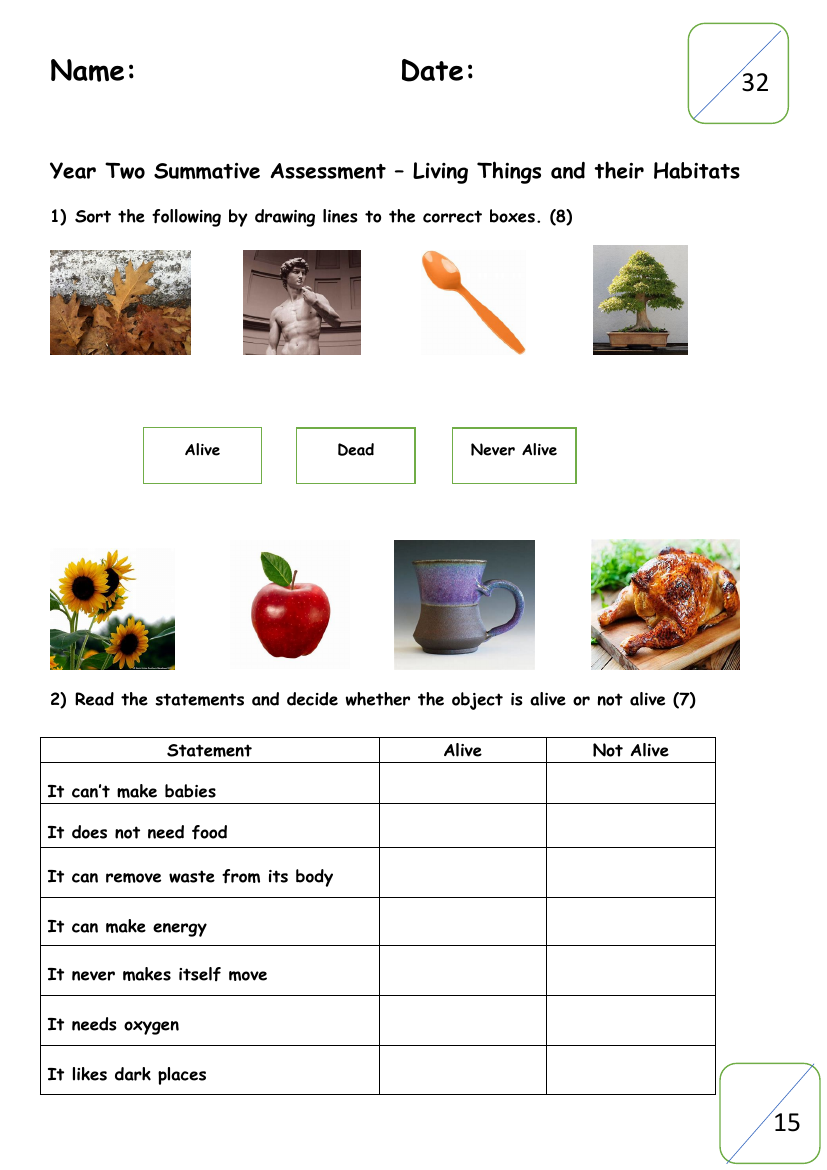
Living Things and their Habitat Assessment Science Year 2
This website and its content is subject to our Terms and Conditions. Tes Global Ltd is registered in England (Company No 02017289) with its registered office at Building 3, St Paul's Place, Norfolk Street, Sheffield, S1 2JE. Presentations, worksheets and activities for primary students studying living things and their habitats.
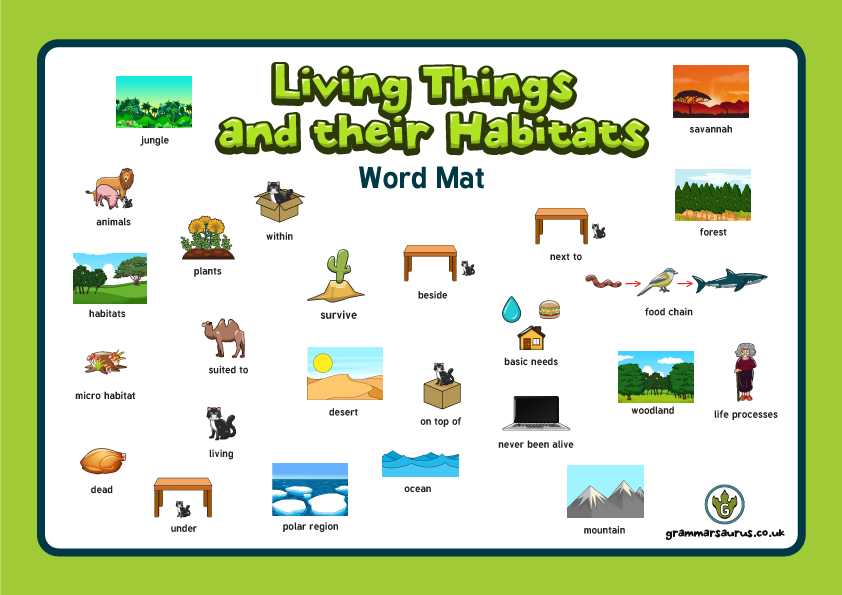
Year 2 Living Things and their Habitats Grammarsaurus
Lower ability to draw each food chain on a worksheet; higher ability to draw each food chain in their books Extension: Children to try to find all of the possible food chains. To access the complete Year 2 Living things and their Habitats planning, and all of the resources needed to teach it, visit:

Animal Habitats Worksheet Matching
This brilliant unit pack includes all the lesson packs and home learning resources included in the PlanIt Science unit 'Living Things and Their Habitats' for Year 2. In this unit children will learn about a variety of habitats and the plants and animals that live there. They will learn to tell the difference between things that are living, dead and things that have never been alive, and apply.

Year 2 Science Vocabulary Living things and their habitats Primary
Easy-to-use resources, illustrated to engage and excite Year 2. You'll find fact sheets, games and sorting activities, as well as a word search, map activity sheet and 'living, dead or never alive' activity sheet. These all help your children work towards learning objectives for Science in KS1. In this lesson, your pupils will learn about the.

Living things and their habitat bundle year 2 Teaching Resources
12. Dark hide- away area (ideal for newts, slugs, snails, etc) Resources. Posters showing the different types of scientific enquiry. Signs around wildlife area indicating things for children to study. Signs for 'run-around' game: 'living', 'non-living', 'movement', 'growth', etc.

This brilliant unit pack includes all the lesson packs and home
Habitats: writing for science. Three great resources to help you meet the learning outcomes for living things and their habitats. Classifying animals parts 1 and 2. In part 1 children will classify vertebrates and invertebrates from a woodland habitat. In part 2 children will further classify vertebrates from a woodland habitat.

Living things and their habitat bundle year 2 Teaching Resources
Living Things and their Habitats planning Living Things and their Habitats teaching resources Lesson 1 - Common Characteristics of All Living Things Lesson 2 - Living, Dead and Never Alive Lesson 3 - Food Chains Lesson 4 - Producers, Consumers and Decomposers Lesson 5 - Identifying Mini-beasts Lesson 6 - Data Handling with Mini.

Habitats and Biomes Worksheets Have Fun Teaching
Living in Habitats - The Complete Series (6 lessons) £12.00. SKU S2CS30006. Key Stage 1 Living things and their habitats Science Year 2. Title. Add to cart. Checkout securely using your preferred payment method. Covering the living things and their habitats Year 2 curriculum objectives, this Living in Habitats scheme of work will help your.

Year 2 Science Living things resource pack powerpoints, planning
Help children learn about animals, plants and their environments in Year 2 Science with the Living Things and their Habitats topic collection. You'll find helpful, easy-to-use resources like PowerPoints, worksheets and display materials - created by teachers following the 2014 National Science Curriculum.

Year 2 Living Things and their Habitats Knowledge Organiser! Teaching
Featuring PowerPoint presentations, worksheets and games, perfect for teaching about living things and their habitats to Year 4 students. Using interactive games and colourful, hand-drawn illustrations, this unit pack is a really engaging tool to use when teaching your children all about living things and their habitat.

Living Things and Their Habitats Activities Apple For The Teacher Ltd
All Worksheets; year-2; Science; Assessments; Y2 Living things and their habitats assessment; Prev Next. Year 2 Science. 1. Y2 Living things and their habitats assessment. Year 2 Science. 2. Y2 Plants assessment.. Living things and their habitats. Max Possible Score: 24. Age Range: 6 - 7. Colour. Colour; Black & White.

Year 2 Science Living Things and their Habitats Habitats Around the
Science: Living Things and Their Habitat: Making New Plants 1 Year 5 Lesson Pack 1. 4.5 (12 reviews) Science: Living Things and Their Habitats: Making New Plants 2 Year 5 Lesson Pack 2. 4.9 (8 reviews) Science: Living Things and Their Habitats: Microorganisms Year 6 Lesson Pack 4. 4.9 (25 reviews)
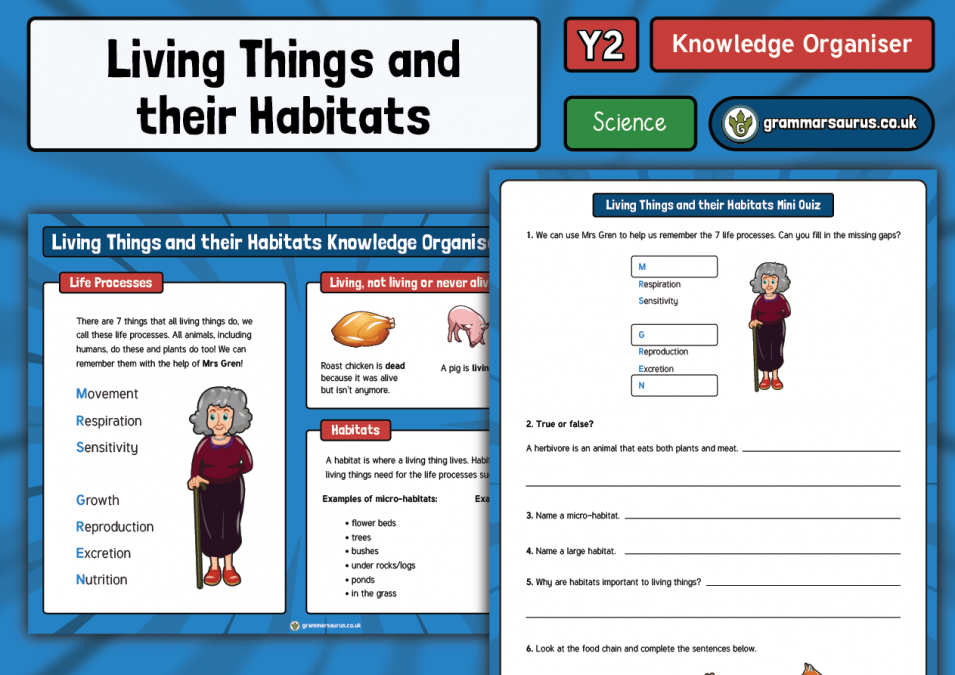
Year 2 Science Living things and their Habitats Knowledge Organiser
Year 2: Living things and their habitats. This list consists of lesson plans, activities and video clips to support the teaching of living things and their habitats at Year Two. It contains tips on using the resources, suggestions for further use and background subject knowledge. Possible misconceptions are highlighted so that teachers may plan.
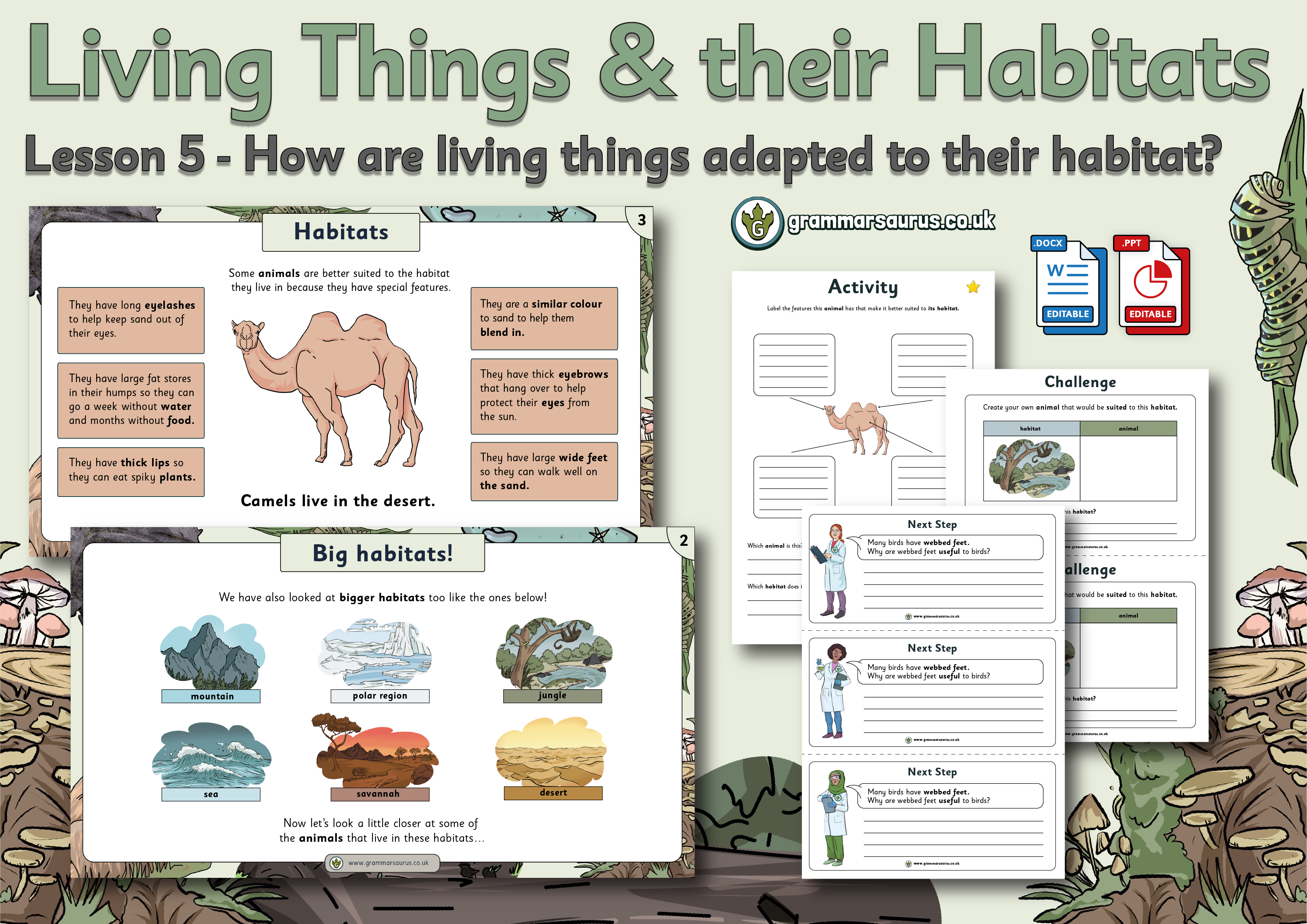
Year 2 Science Living Things and their Habitats How are living
This brilliant unit pack includes all the lesson packs and home learning resources included in the PlanIt Science unit 'Living Things and Their Habitats' for Year 2. In this unit children will learn about a variety of habitats and the plants and animals that live there. They will learn to tell the difference between things that are living, dead.

Printable Animal Habitats Worksheets
Check children's knowledge of the basic needs of living things with this worksheet. Can they sort the basic needs based on whether they apply to. More info. Quick View. Things That Used to be Alive (Year 2). Super Senses — How Animals are Suited to Their Habitats (Year 2) Living Things; Key Stage 1 Science; PDF;
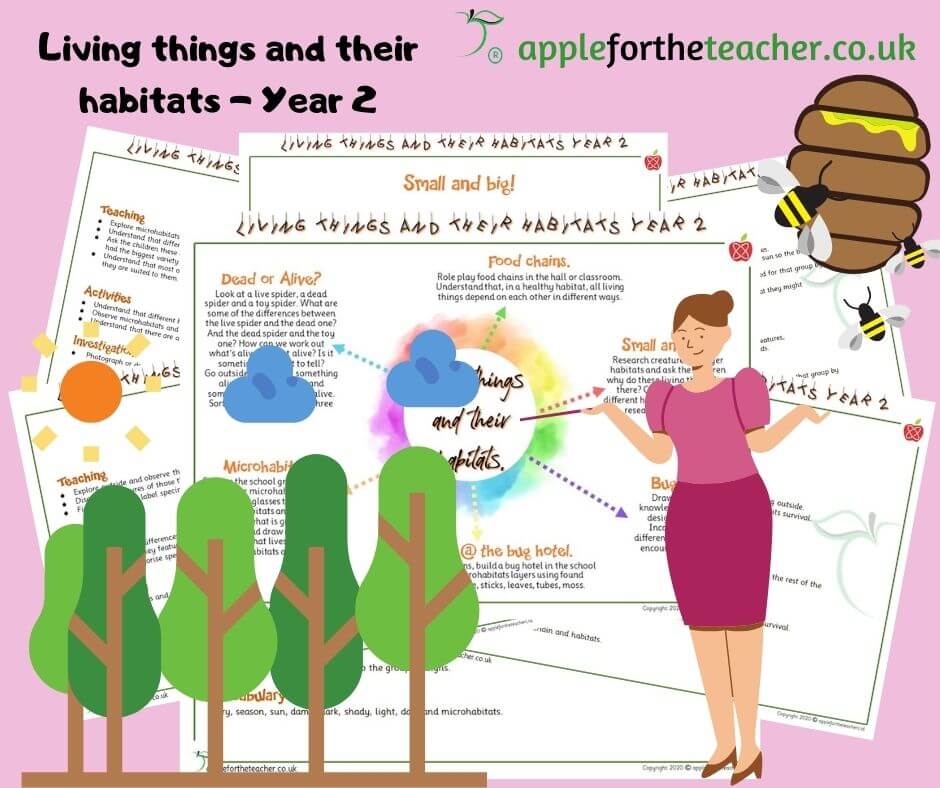
Living Things and Their Habitats Planning Year 2 Apple For The
Science Year 2. Habitats. How can we work out what's alive and what's not? Collect specimens and sort them into categories. Investigate habitats and food chains. Design and make a bug hotel that contains a variety of micro habitats to encourage a range of creatures.